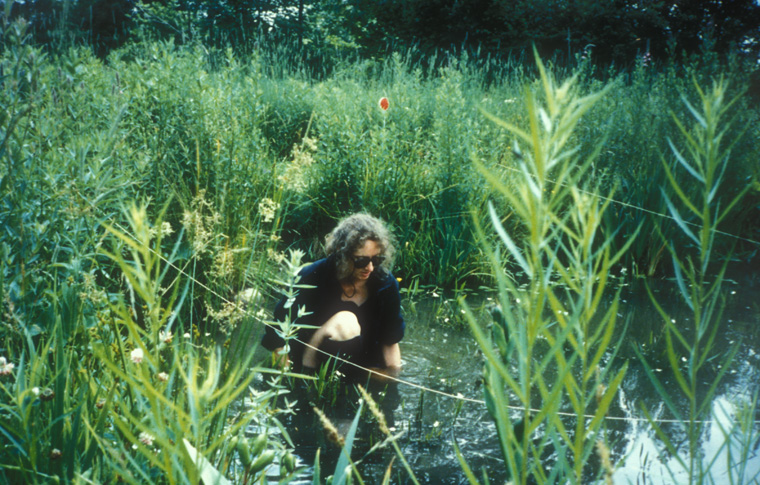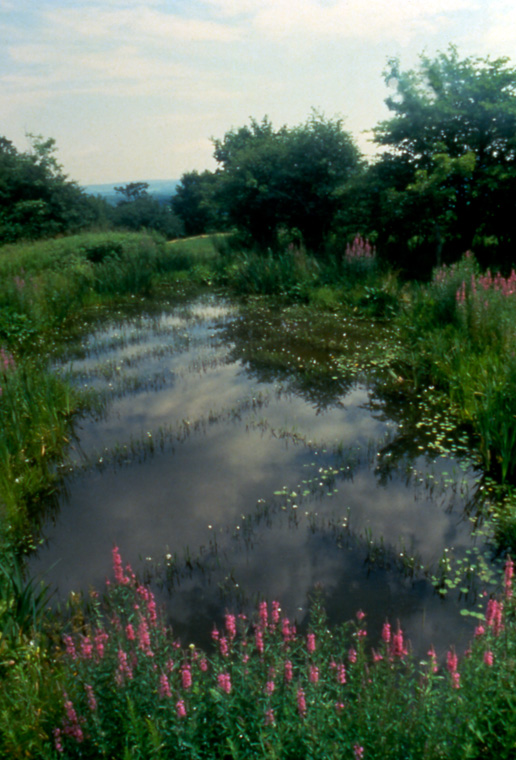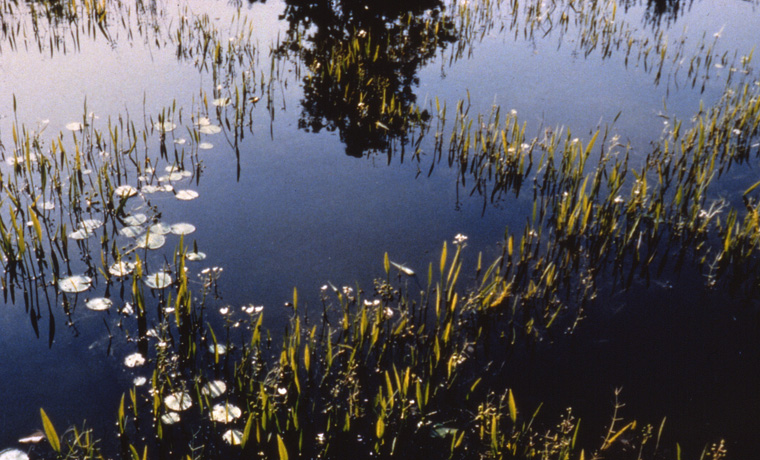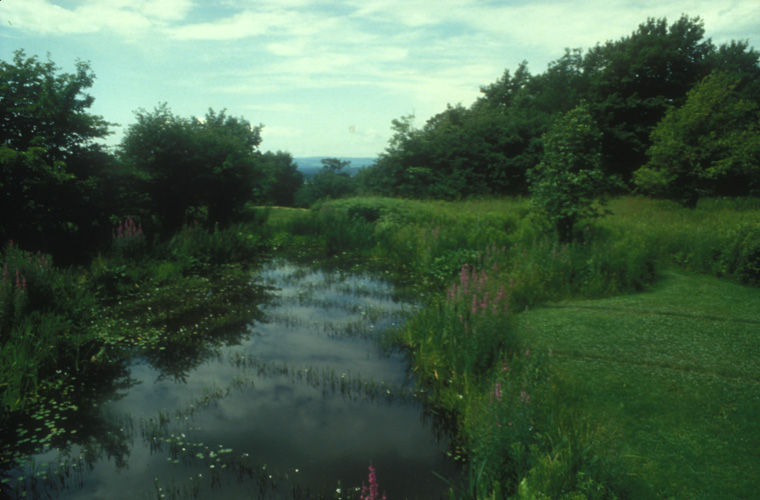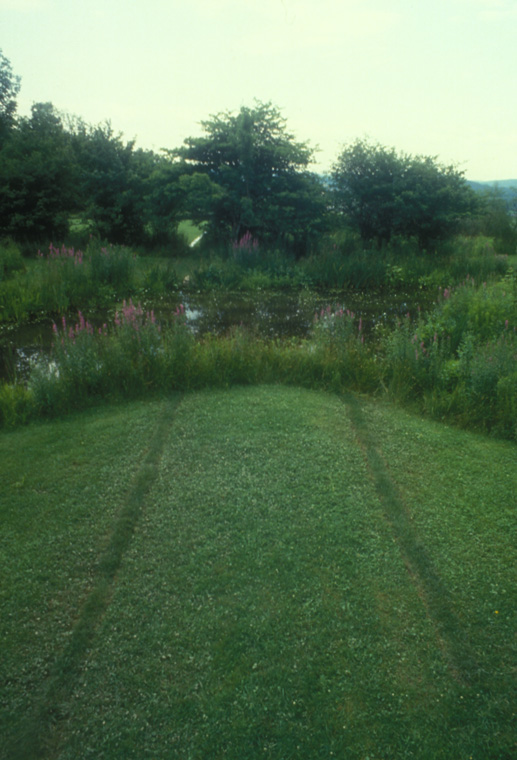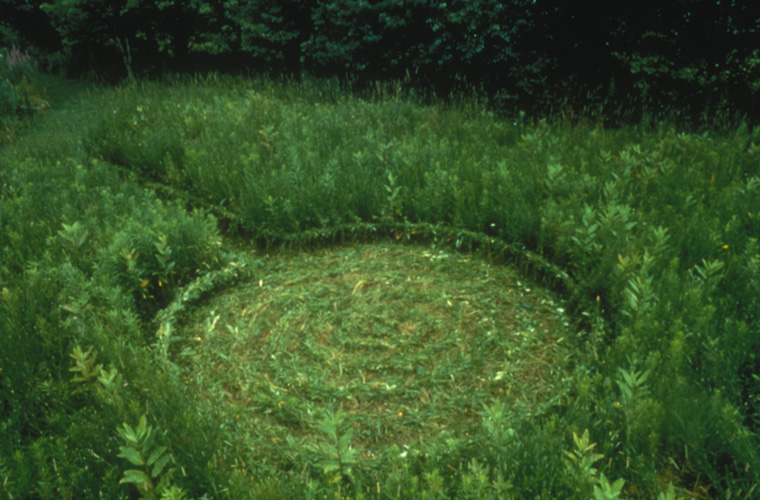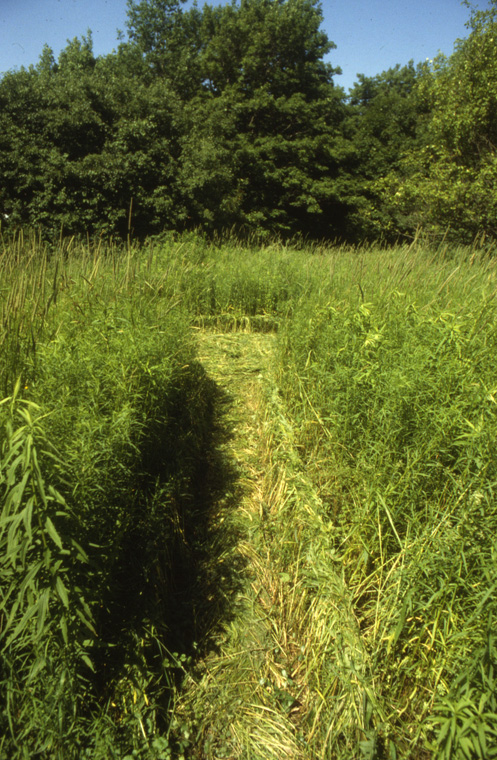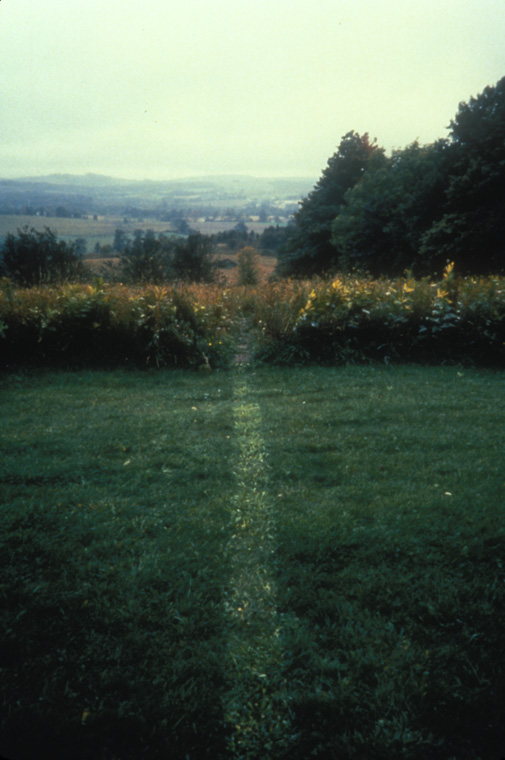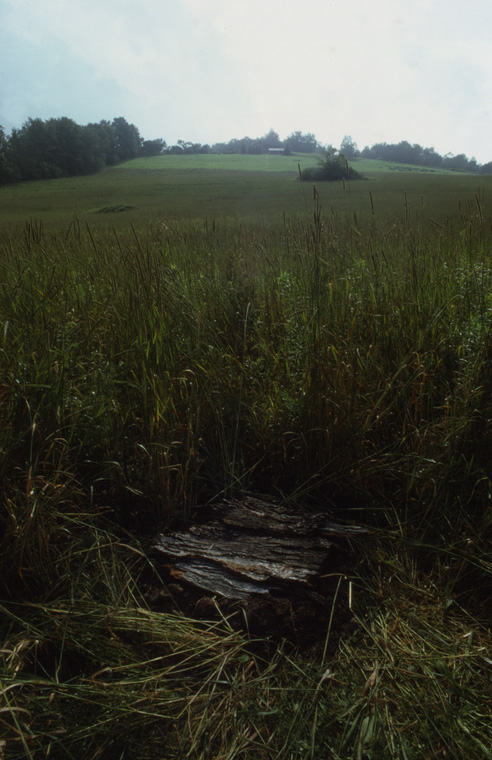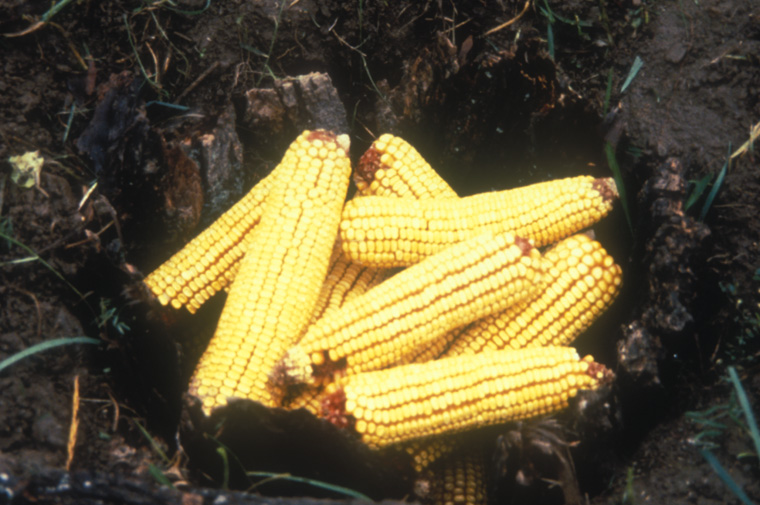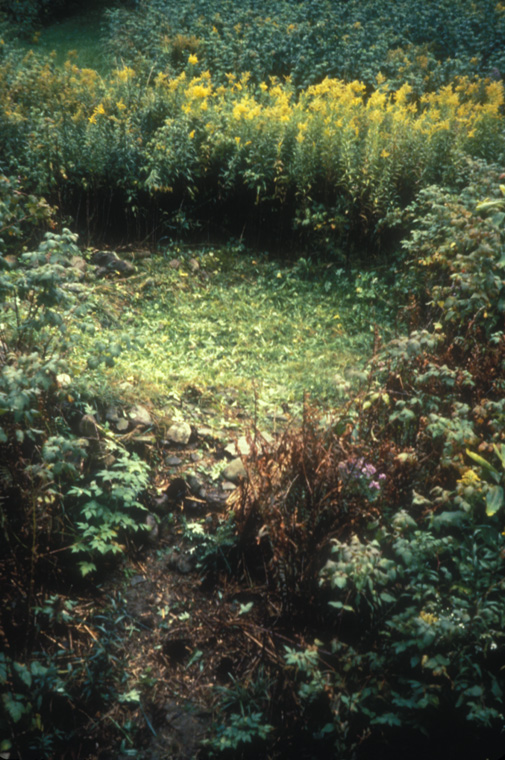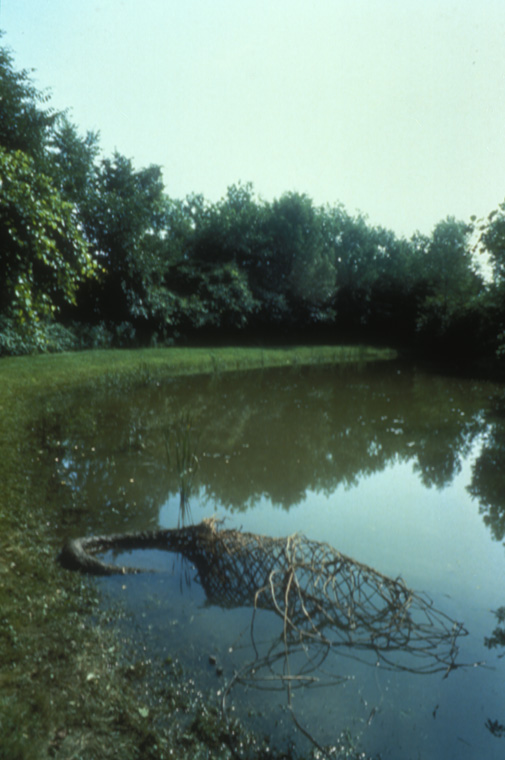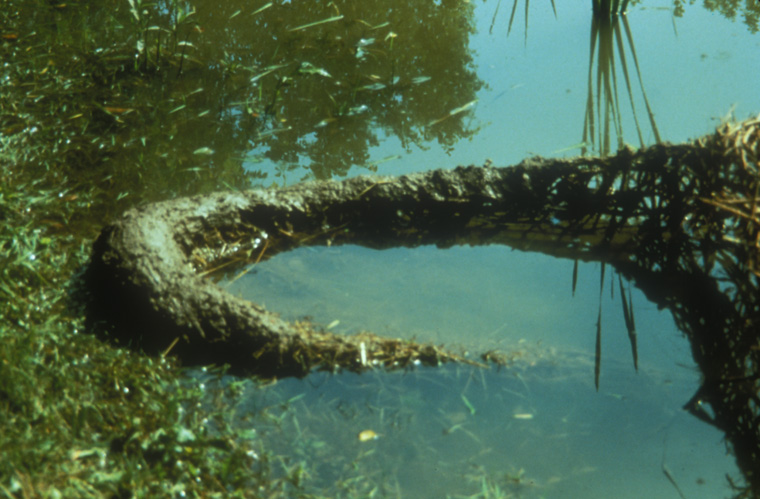Considering Mother's Mantle: Project for Stone Quarry Hill Art Park
A project for Stone Quarry Hill Art Park, Cazenovia New York
July - October 1992
Considering Mother's Mantle was made from materials found on the site - real physical materials, and historical, geological and cultural materials. I consider elements and processes for what they are intrinsically as well as for their potential to extend meaning through metaphor. The bedrock underlying Stone Quarry Hill shapes it and is exposed on occasion revealing grooves created by the north/south movement of the glaciers eons ago. These glacial grooves provided the beginning of the gridded pond. The hilltop site presents views of the surrounding agricultural countryside, gridded blocks of cultivated land; its rocky shape is cloaked by a thin mantle of soil. The earliest known inhabitants - the Oneida Iroquois - were once called "The Stone People."
The nucleus of the piece is the pond in which I divided the water by transplanting the naturally occurring arrowhead leaf plants into a grid aligned with the compass points. When I asked people in the community about environmental change, they indicated that development was the principle threat. Claiming and bounding the water in this way is simultaneously outrageous and humorous - a perverse cultivation. While rearranging the plants into the grid I began to feel with my body something similar to that which animals must experience as they encounter our hedgerows, fences and groomed lawns. I couldn't move freely. I was forced to adjust my movements to the imposed structure.
Adjacent to the pond the lines of the grid extend outward. On land they are articulated by inlays of refined turf and tall living grasses which have been braided to form "pathways", cul du sacs and dead-ends. Braiding grasses is simply a means of systematically organizing plant material, plant material that is literally rooted in the site. The living grid of lines literally leads in all four directions; sometimes lines are lost and then picked up again farther on. As the lines project farther from the pond they change in physical character and lead the viewer to sites that reveal geophysical and cultural layers of landscape use over time. The braiding is an ordering of the landscape, a reference to the Iroquois use of native plants in their braided corn masks and indebted to the fact that the first non-native owner of the land was herself, a weaver.
Physically signifying the American Indian land use is difficult because of the boundless way Indians view the land. I chose to create two effigies to honor their presence - the canoe (movement) and a vegetable storage pit (nurture). Partway down the major sightline from the hilltop, a pathway led to another pond. Sited here was a canoe fragment made of woven grapevine and mud. It referred to a prominent local legend that long ago an Indian dugout was sunk in Cazenovia Lake by a young Indian couple who had eloped from two different tribes. The dugout canoe was raised in 1912, then re-submerged again at the request of local tribes. There is archeological evidence of tribes having dug pits for storage and preservation of corn and squash. Sometimes the pits were sealed when the people made seasonal moves so they could return later to their stores of seeds and food.
The lands in this locale of present day New York state once belonged to the Oneida Iroquois. The Holland Land Company obtained this land from the State of New York in the late 18th century (1793 or 1794). Currently the Oneidas are challenging the treaties that ratified this exchange as illegal because there was no Federal representative present as indicated in the treaty. Because all the lands around Cazenovia were sold to the first white settlers by the Holland Land Company, and because all of the original records are intact at the Lorenzo State Historical Site, research on an intimate scale is possible. Research revealed that the land was bought in 1803 by Mary Hackley, who was a weaver. Marking her home site are the cleared remains of a silo. At the Historical Site there are accounts of Mary Hackley, who bought the original 50 acre plot upon which Stone Quarry Hill Art Park now stands. She bought it in 1803 for $309.00. Because almost all business was transacted by barter at the company store, we can examine the accounts of her purchases and how she paid for her goods. In the daybooks and ledgers we can follow her purchases of sundries, whiskey, one book, notions and copperas among other items. Her primary method of payment was with woven goods - as much as 25 yards of flannel at a time - though one entry indicates that she bartered with household ashes (probably for the potash industry).
In order to see MOTHER'S MANTLE, viewers had to walk, observe, search, remember, connect and imagine.
"If you're going to work in a place, you have to become that place. You're invited to tell the story of places - it's an intimate gesture. It's exhausting. It's imperative to be as informed as you can." Newton and Helen Mayer Harrison speaking on a panel at the College Art Association Conference, Seattle, Washington, February 1993.
